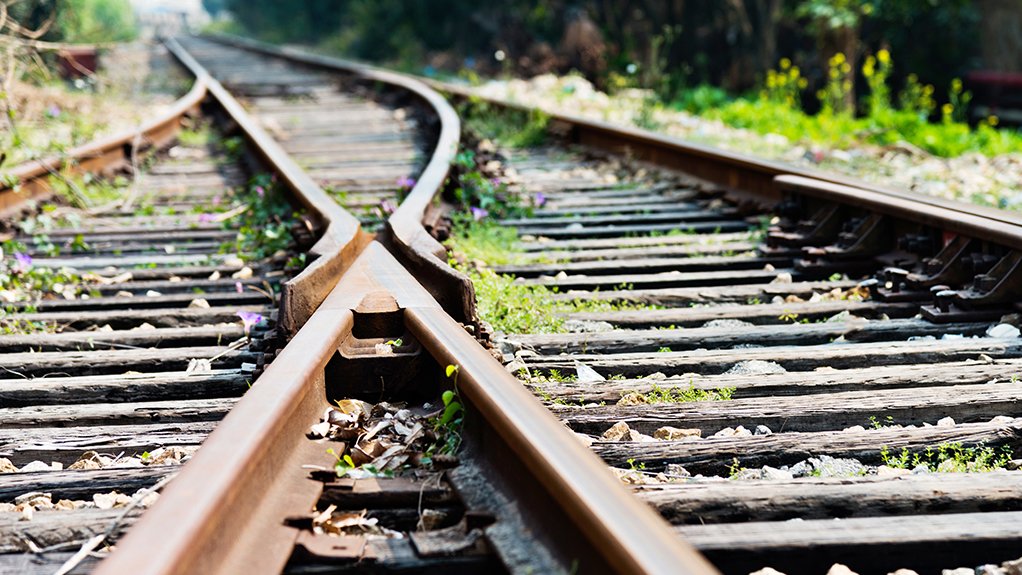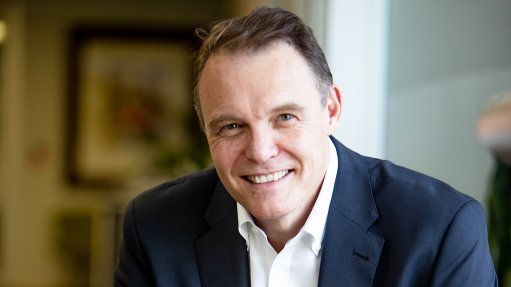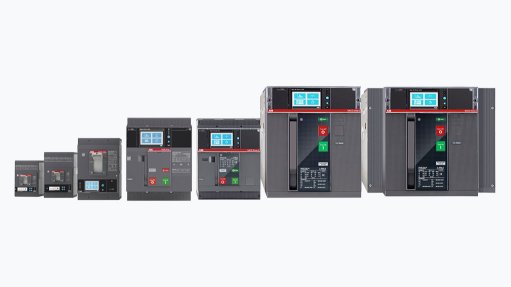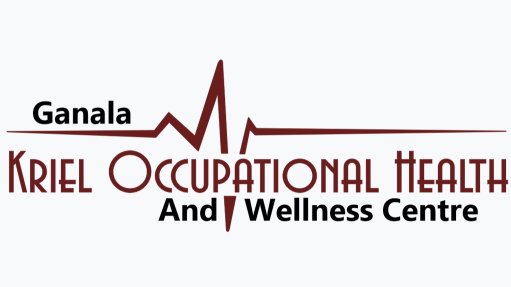Rail infrastructure upgrade funding - time to put our Rand where our mouth is
By Pulane Tshabalala Kingston, CEO, voestalpine (VAE) SA
There’s a sensorily magical moment when you witness a fully locked-and-loaded freight train as it begins to deploy its until-then preserved potential energy, to slowly yet decisively haul a mind-blowing tonnage of goods containers double stacked on railway flatbed wagons. Something about the initially subtle, yet incremental hiss of the various train drive systems kicking in, the at first faint rumble of the tracks and the first few clickety clacks of the various iron and hydraulic links beginning to pull in one direction, as unbreakable iron starts to grind on iron, that works altogether to define ‘lift’ and ‘movement’. In that moment, you are left with the unmistakable sense that things are about to move.
Well, a moment arguably comparable to the one I romanticise above occurred recently in the policy loading terminal of our country’s rail sector. The adoption by cabinet of the White Paper on rail policy in May was undoubtedly that “things are about to move” moment, for many of us who are passionate about and work in the sector. But just like with any train, pull-off from the terminal is but the beginning of the journey. For things to really move, the wheels have to keep on turning and grinding. So, in a manner of speaking then, we have, with the adoption of the White Paper, disengaged the policy brakes. It is time to now incrementally add acceleration and momentum.
As far as freight rail is concerned, adding that momentum begins with unlocking the big infrastructure conundrum our country faces. Transnet CEO Portia Derby recently put a price tag of R100-billion on the required work to restore the country’s rail network and ports to their past glory by upgrading them. Based on an analysis of maintenance expenditure conducted by the African Railway Industry Association - including backlog - the ‘bail out’ to return the network to the condition it was in in 2012 is around the R50-billion mark. That no one, especially not government, has that kind of money piled up in a vault somewhere is by now trite. And so is the question of what to do then, as neglecting the key pipeline and network sector that rail is, is simply not an option.
I believe a key intervention that would unlock especially freight rail’s wheels would be a once-off government grant that government should avail to Transnet, for the purpose of fixing and upgrading its infrastructure. Naturally, in the context of a tightly squeezed fiscus, the question of whether we can afford such a grant is only natural. But this, in my view, is one of those instances where the reverse question is more appropriate: given the role that an integrated transport system plays in fostering economic growth, can we afford not to invest decisively in bringing the country’s freight rail network back to its design specifications?
Of course, one is not arguing for a “throw money at the problem” approach. Far from it! The once-off grant I am arguing for would of necessity have to be based on a well-articulated strategy that provides for a clear roadmap setting out how such an investment will meaningfully improve efficiencies and generate economic growth, within a specified period, say of seven years. This period would also capacitate the railway network optimally to recapture lost rail market share across all segments and increase it by capturing volumes that will move downstream over time. The revenue generated, together with revenue from third party access fees for the use of the network, would set the foundation for Transnet being able to afford to independently fund ongoing expansion, upgrade and maintenance of its rail network infrastructure into the future.
This roadmap would have to be backed up by a solid implementation action plan that would be closely monitored and would be underpinned by solid deviation management. The roadmap would need, among other things, to identify the refurbishment priorities. Given the interdependencies between modes of transportation, such a strategy would also need to be embedded in an effective, implementable integrated solution.
An example illustrates this point. Transnet is currently in the process of finalising the bidding processes for the initial 16 train slots it opened up for third party, private sector access it availed on its rail network a few months ago. But already, its CEO has signalled that the number of slots availed for third party access is to be increased to 42 in 2023, and that this is to be a permanent feature of the rail operating model.
I argue, however, that the commendable objectives behind availing of the 42 train slots are significantly undercut when we do not ensure that a terminal like City Deep, for example, has the capacity to efficiently load the trains and that the Port of Durban can absorb more trains, as opposed to trucks.
Most importantly, these commendable forays must be coupled with continuous engagement with the rail industry, to bridge what appears to be a massive breakdown of trust between Transnet and other stakeholders, that has developed over time.
Making the kind of investment I propose in the form of the once-off grant to Transnet is self-evident because as a network industry that is a bedrock of economic growth and essential to creating a globally competitive economy, the upgrade of the railway network infrastructure will fundamentally change South Africa’s economic trajectory. It must therefore be adopted as a focus area under Operation Vulindlela to ensure the effective implementation of such a plan. Enabling private sector participation in rolling stock and rail operations is woefully inadequate as an immediate step.
In taking these bold infrastructure investment steps, South Africa would not be striking out in completely unfamiliar territory. There are ample examples of governments availing grants for the expansion, upgrade, refurbishment and maintenance of railway systems, including both operations and infrastructure.
In a way, our own government has set the example on our continent with its investment in the upgrade and refurbishment of what is the continent’s most advanced passenger rail network, spanning over 22 387 route kilometres of track. Last year, Government committed R57-billion, which is estimated to amount to about 27% of the department of transport’s budget in the medium term, towards PRASA’s modernisation programme. That programme is designed to improve the dilapidated 471 stations and over 22 080 route kilometres (including some of the 22 000 route kilometres of track under the control of Transnet, some of which it uses) of network infrastructure and increase the number of operating trains.
There are also examples to emulate in the leading economies of the world, such as Germany. In that country, a 33 000-route kilometre rail network, Deutsche Bahn (DB), the national railway company, received an allocation of €12.33-billion from the federal government in 2021 and €9.38-billion in 2022, for the purpose of modernising the rail network, as well as some trains.
This forms part of an overall €62-billion commitment from the federal government towards maintaining and modernising DB’s rail network between now and 2030, with the State-owned Rail Company contributing another €24-billion.
Austria offers up another example. With a small population of 8.9-million people and a rail network of 5 000 route kilometres, the country’s rail operator received a government grant of €18.2-billion for its 2022-2027 rail network modernisation programme. It draws down €3-billion a year in this regard. For Germany and Austria, a big driver for their modernisation plans is to enable them to meet their climate protection goals.
Of course, a major difference with the grant I am proposing for Transnet is that in the case of these two countries, their rail networks are predominantly used for passenger rail. The philosophy underpinning the limitation of government grants to passenger rail networks is that the operators do not earn enough in passenger ticketing revenues to cover operating expenses. Their governments in turn have every reason to make such funding available, as they recognise that an effective passenger rail service is one of the key building blocks for their economic activity and growth.
In our context, the case for such investment support for the freight rail sector infrastructure is amply made by the centrality of network industries like rail to our country’s economic turn-around blueprint, the South African Economic Reconstruction and Recovery Plan, as well as the longer-term goals of the rail White Paper that aims to establish rail as the backbone of land transportation in the country by 2050.
Such an investment would lay the ground for the kind of efficiencies the White Paper envisages from greater private sector participation in various aspects of freight rail, such as third-party access.
If that is our destination, it is time for us to get the freight rail sector’s drive systems into gear, to convert its potential energy into kinetic energy that will move the economy. The acceleration system to get us to leave the policy loading terminal and gain momentum will undoubtedly be unlocked by bold brake-loosening, obstacle clearing investment decisions.
Article Enquiry
Email Article
Save Article
Feedback
To advertise email advertising@creamermedia.co.za or click here
Comments
Press Office
Announcements
What's On
Subscribe to improve your user experience...
Option 1 (equivalent of R125 a month):
Receive a weekly copy of Creamer Media's Engineering News & Mining Weekly magazine
(print copy for those in South Africa and e-magazine for those outside of South Africa)
Receive daily email newsletters
Access to full search results
Access archive of magazine back copies
Access to Projects in Progress
Access to ONE Research Report of your choice in PDF format
Option 2 (equivalent of R375 a month):
All benefits from Option 1
PLUS
Access to Creamer Media's Research Channel Africa for ALL Research Reports, in PDF format, on various industrial and mining sectors
including Electricity; Water; Energy Transition; Hydrogen; Roads, Rail and Ports; Coal; Gold; Platinum; Battery Metals; etc.
Already a subscriber?
Forgotten your password?
Receive weekly copy of Creamer Media's Engineering News & Mining Weekly magazine (print copy for those in South Africa and e-magazine for those outside of South Africa)
➕
Recieve daily email newsletters
➕
Access to full search results
➕
Access archive of magazine back copies
➕
Access to Projects in Progress
➕
Access to ONE Research Report of your choice in PDF format
RESEARCH CHANNEL AFRICA
R4500 (equivalent of R375 a month)
SUBSCRIBEAll benefits from Option 1
➕
Access to Creamer Media's Research Channel Africa for ALL Research Reports on various industrial and mining sectors, in PDF format, including on:
Electricity
➕
Water
➕
Energy Transition
➕
Hydrogen
➕
Roads, Rail and Ports
➕
Coal
➕
Gold
➕
Platinum
➕
Battery Metals
➕
etc.
Receive all benefits from Option 1 or Option 2 delivered to numerous people at your company
➕
Multiple User names and Passwords for simultaneous log-ins
➕
Intranet integration access to all in your organisation





















